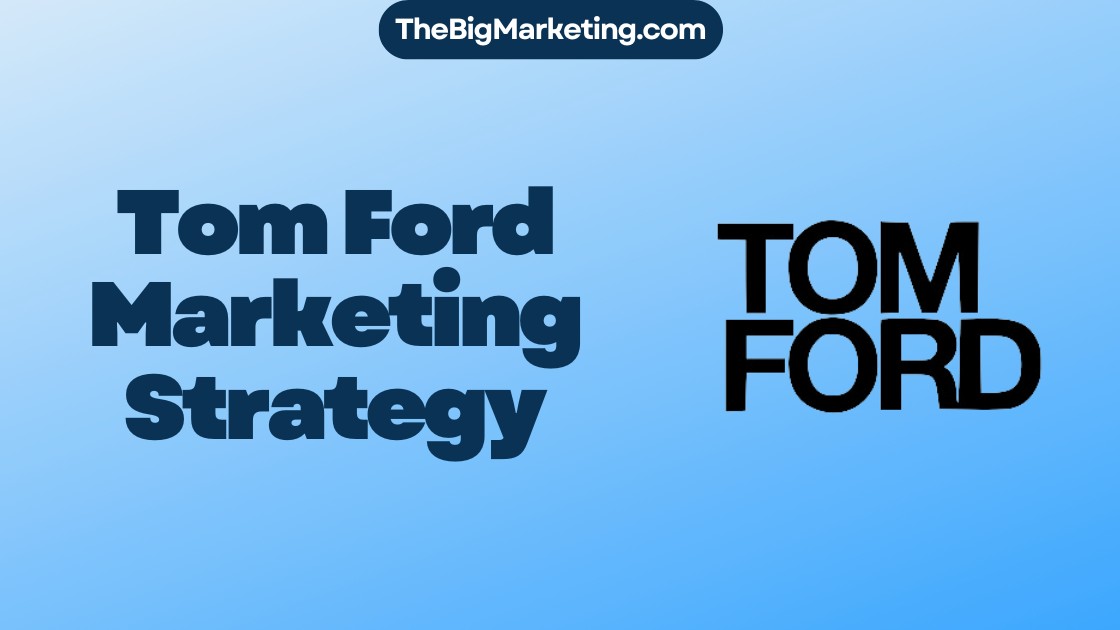Mattel, a prominent player in the toy industry, faces fierce competition from various toy companies. Understanding the competitive landscape and analyzing the strengths and weaknesses of these competitors is crucial for Mattel to stay ahead in the game. Let’s take a closer look at some of the top competitors and alternatives challenging Mattel’s market position in 2024.
Among the top Mattel competitors, we have Hasbro, LEGO Group, MGA Entertainment, Spin Master, Jakks Pacific, and Bandai. These companies, each with their unique product offerings and strategies, create a dynamic and highly competitive environment in the toy industry.
Hasbro, a major rival of Mattel, is a global play and entertainment company known for its diverse range of toys and games. Their popular brands like Transformers, Monopoly, and Nerf give them an edge in capturing market share and customer attention.
The LEGO Group, famous for its iconic building blocks, offers a creative and educational play experience for children worldwide. Mattel and LEGO compete by providing different play experiences and engaging children through their respective brands.
MGA Entertainment stands out as an innovative competitor, focusing on unique and engaging play experiences. Brands like LOL Surprise! and Little Tikes have gained popularity among children and challenge Mattel’s traditional toy design approach.
Spin Master, a rapidly growing toy company, disrupts the market with successful brands like Paw Patrol and Hatchimals. Their emphasis on innovation and storytelling creates captivating play experiences that give Mattel a run for its money.
Jakks Pacific, with its diverse product range including action figures and dolls, collaborates with popular licenses like Disney and Nintendo. This collaboration allows them to create toys based on beloved characters, presenting a strong challenge to Mattel’s market position.
Bandai, a global player in the toy industry, operates across various segments, offering toys, collectibles, and video games. With beloved franchises like Dragon Ball and Tamagotchi, Bandai competes with Mattel in different regions worldwide.
Analyzing the competitive landscape, including product quality, play value, price, innovation, licensing partnerships, and marketing strategies, helps Mattel identify opportunities for growth and refine its product offerings to stay ahead in this highly competitive toy industry.
In conclusion, while Mattel remains a dominant force in the toy industry, it faces stiff competition from Hasbro, LEGO Group, MGA Entertainment, Spin Master, Jakks Pacific, and Bandai. By understanding the strengths and weaknesses of these competitors and embracing innovation, Mattel can ensure continued success in the rapidly evolving toy market.
Hasbro – A Major Competitor of Mattel
Hasbro is a global play and entertainment company that poses a significant challenge to Mattel in the toy industry. With a diverse range of toys, games, and entertainment products, Hasbro competes fiercely with Mattel for market dominance and consumer attention.
As a major player in the toy industry, Hasbro designs, manufactures, and markets popular brands such as Transformers, Monopoly, Nerf, My Little Pony, and Play-Doh. These iconic brands have captured the imagination of children worldwide and have become household names among toy enthusiasts.
The competition between Mattel and Hasbro is intense, with each company striving to outshine the other in terms of innovation, quality, and consumer appeal. Both companies invest heavily in research and development to create products that meet the ever-evolving needs and preferences of children.
Hasbro’s commitment to delivering exciting play experiences has made it a tough competitor to beat. The company’s global reach and extensive distribution network allow it to penetrate various markets around the world, posing a significant challenge to Mattel’s market share.
In the rapidly evolving toy industry, Mattel and Hasbro constantly engage in a battle for supremacy. Their competitive spirit drives both companies to push the boundaries of creativity and product development. By analyzing the strategies and products of these two industry giants, we gain insights into the competitive dynamics that shape the toy industry.
Hasbro’s iconic brands, such as Transformers and Monopoly, have become synonymous with fun and entertainment.
LEGO Group – Building Blocks Competitor of Mattel
The LEGO Group, a leading player in the toy industry, presents a formidable challenge to Mattel. Renowned for its iconic building blocks, LEGO offers children around the world creative and educational play experiences. With a diverse range of products including LEGO sets, LEGO video games, and LEGO-themed movies, the company captivates young minds and fosters imaginative thinking.
Mattel and LEGO engage in healthy competition by providing distinct play experiences and connecting with children through their respective brands. The LEGO Group’s emphasis on construction and problem-solving skills complements Mattel’s focus on dolls, action figures, and vehicles, presenting consumers with a range of choices to suit different preferences and playstyles.
In recent years, LEGO has expanded beyond its core building blocks and ventured into various collaborations and licensing partnerships. This strategic move has allowed LEGO to tap into popular franchises like Star Wars, Marvel, and Harry Potter, further solidifying its position in the market. By leveraging these established brands, LEGO enhances its appeal to both children and adult collectors, offering a diverse array of products that cater to different age groups and interests.
Both Mattel and the LEGO Group actively invest in research and development to stay at the forefront of innovation. LEGO continually introduces new themes and sets that excite children and fuel their imagination. From fantasy worlds to real-world locations and everything in between, LEGO consistently churns out compelling products that stand the test of time.
It’s important for Mattel to closely monitor and analyze the LEGO Group’s strategies and offerings. By understanding the competitive landscape and key market trends, Mattel can refine its product development, marketing campaigns, and overall business strategy, enabling the company to remain competitive in the dynamic toy industry.
MGA Entertainment – Innovative Competitor of Mattel
MGA Entertainment, a prominent player in the toy industry, stands as an innovative and creative competitor against Mattel. With a focus on delivering unique and engaging play experiences, MGA Entertainment has captured the attention of children and parents alike with its popular brands such as LOL Surprise!, Little Tikes, and Bratz.
What sets MGA Entertainment apart from its competitors, including Mattel, is its emphasis on creativity and the element of surprise in its toys. By incorporating unexpected twists and engaging narratives, MGA Entertainment has created a loyal following and an undeniable appeal among children.
The competition between Mattel and MGA Entertainment not only reflects their different approaches to toy design but also highlights the diverse strategies employed in toy marketing. While Mattel may focus on established brands and timeless toys, MGA Entertainment thrives on pushing the boundaries of imagination and delivering unexpected delights to children.
With its constant focus on innovation and creativity, MGA Entertainment challenges the status quo of the toy industry. This dynamic competition leads to the overall growth and advancement of the market, providing children with even more captivating and enjoyable play experiences.
Spin Master – A Growing Competitor in the Toy Industry
Spin Master, a rapidly growing toy company, is making waves in the toy industry with its innovative and captivating play experiences. The company has successfully captured the attention of children and parents alike with popular brands like Paw Patrol, Hatchimals, and Kinetic Sand. With its focus on innovation and storytelling, Spin Master has disrupted the market and posed a challenge to established players like Mattel.
Spin Master’s rise in the toy industry can be attributed to its commitment to creating unique and exciting toys that engage children’s imaginations. The company understands the importance of staying ahead of the curve by constantly exploring new concepts and pushing boundaries. By leveraging technology and interactive features, Spin Master creates play experiences that are both entertaining and educational.
With its strong emphasis on creativity and play value, Spin Master has successfully carved out a niche for itself in the competitive toy market. The company’s ability to connect with children through its beloved brands has propelled its growth and popularity.
As Spin Master continues to expand its product portfolio and attract a loyal customer base, it presents a formidable competition for Mattel. The rivalry between these two companies in the toy industry highlights the significance of innovation, storytelling, and captivating play experiences in capturing the hearts and minds of children.
Jakks Pacific – Diverse Competitor in the Toy Market
Jakks Pacific is a formidable competitor in the toy market, challenging Mattel’s market position. With a diverse range of products, including action figures, dolls, and role-playing toys, Jakks Pacific caters to a wide audience of children. The company leverages its strong licensing partnerships with popular brands, such as Disney and Nintendo, to create toys based on beloved characters, adding to its appeal.
Jakks Pacific’s differentiated product offerings set it apart from competitors, providing unique play experiences for children. By collaborating with renowned licenses, the company brings well-known characters to life through its high-quality toys. This strategic approach enables Jakks Pacific to tap into the existing fan base of these brands and capture market share.
With a focus on innovation and creativity, Jakks Pacific continually introduces new and exciting toys that capture the imagination of children. By staying attuned to the latest trends and consumer preferences, the company ensures its products remain relevant and in-demand. This commitment to innovation is essential in the highly competitive toy market, where companies like Mattel are also vying for consumer attention.
By analyzing Jakks Pacific’s product offerings, as well as its strategy for licensing and innovation, a comprehensive competitive analysis can be conducted. This analysis will help assess how Jakks Pacific compares to Mattel and other key industry players, providing insights into their respective strengths and weaknesses.
Jakks Pacific’s diverse portfolio, strong licensing partnerships, and focus on innovation make it a formidable competitor to Mattel in the toy market. As both companies strive to capture market share and engage children worldwide, their fierce competition drives them to continuously enhance their product offerings and stay ahead in this dynamic industry.
Bandai – A Global Player in the Toy Industry
Bandai is a global toy company that operates across various segments, including toys, collectibles, and video games. With a diverse product portfolio that ranges from popular franchises like Dragon Ball and Gundam to classic toys like Tamagotchi, Bandai has established itself as a formidable competitor in the toy industry.
Bandai’s international presence allows them to compete for market share and consumer attention in different regions, putting them in direct competition with Mattel and other industry leaders. Their ability to cater to a wide range of interests and preferences gives them a competitive edge, as they provide toys and collectibles that appeal to both children and collectors.
As a global player, Bandai’s strategic partnerships and licensing agreements further bolster their position in the toy industry. By collaborating with popular franchises and incorporating beloved characters into their product lines, Bandai is able to capture the attention of consumers and drive sales.
Mattel’s Competitive Analysis in the Toy Industry
Competing in the toy industry requires a deep understanding of market dynamics and the strengths and weaknesses of key players. Mattel faces competition not only from its major competitors, such as Hasbro, LEGO Group, MGA Entertainment, Spin Master, Jakks Pacific, and Bandai, but also from numerous other toy companies worldwide.
When analyzing the competitive landscape, several key factors influence competition in the toy industry. These factors include product quality, play value, price, innovation, licensing partnerships, and marketing strategies. Understanding how Mattel measures up in these areas is crucial in identifying opportunities for improvement and staying ahead in the highly dynamic toy industry.
Product Quality and Play Value
One important aspect that determines a toy company’s competitiveness is the quality of its products and their play value. It is essential for Mattel to ensure that its toys are safe, durable, and provide meaningful play experiences for children. By consistently delivering high-quality products with engaging play features, Mattel can differentiate itself from competitors and attract loyal customers.
Pricing and Affordability
Pricing is another significant factor in the toy industry. Mattel must consider the pricing strategies of its competitors and strive to offer products at competitive prices. By providing affordable options without compromising on quality, Mattel can gain a competitive edge and appeal to a broader range of consumers.
Innovation and Creativity
Innovation is key in the toy industry, as children constantly seek new and exciting experiences. Mattel must invest in research and development to create innovative toys that capture the imagination of children and offer unique play experiences. By fostering a culture of creativity and continuously introducing innovative products, Mattel can stay relevant in an ever-evolving market.
Licensing Partnerships
Collaborating with popular licenses and franchises can significantly impact a toy company’s competitiveness. Mattel should seek licensing partnerships that align with its target audience’s interests and preferences. These partnerships allow Mattel to create toys based on beloved characters and brands, enhancing its product offerings and attracting fans of those franchises.
Marketing Strategies and Brand Awareness
Marketing plays a vital role in increasing brand visibility and customer engagement. Mattel must develop effective marketing strategies to promote its products and build brand awareness. Through comprehensive marketing campaigns, Mattel can communicate the unique features and benefits of its toys, establishing a strong brand presence in the market.
By conducting a thorough competitive analysis and continuously evaluating these key factors, Mattel can identify areas for improvement, refine its product offerings, and maintain a competitive position in the toy industry.
Conclusion
As one of the leading toy companies, Mattel faces tough competition from notable players in the industry. Hasbro, LEGO Group, MGA Entertainment, Spin Master, Jakks Pacific, and Bandai are some of its key competitors, each bringing unique strengths and strategies to the toy industry. This dynamic landscape creates a vibrant and competitive market for toy companies.
Analyzing the strengths and weaknesses of these competitors is crucial for Mattel’s success. By understanding their approaches, Mattel can adapt and innovate to stay relevant in a rapidly evolving toy industry. Factors such as product quality, play value, price, innovation, licensing partnerships, and marketing strategies play a significant role in determining competitive advantage.
In this highly competitive market, staying abreast of the latest industry trends and consumer preferences is essential. Mattel must continue its commitment to research and development, customer engagement, and brand building to maintain its position as a key player in the toy industry. By embracing both traditional and innovative strategies, Mattel can navigate the challenges and opportunities presented by its competitors to thrive in the ever-evolving toy market.






